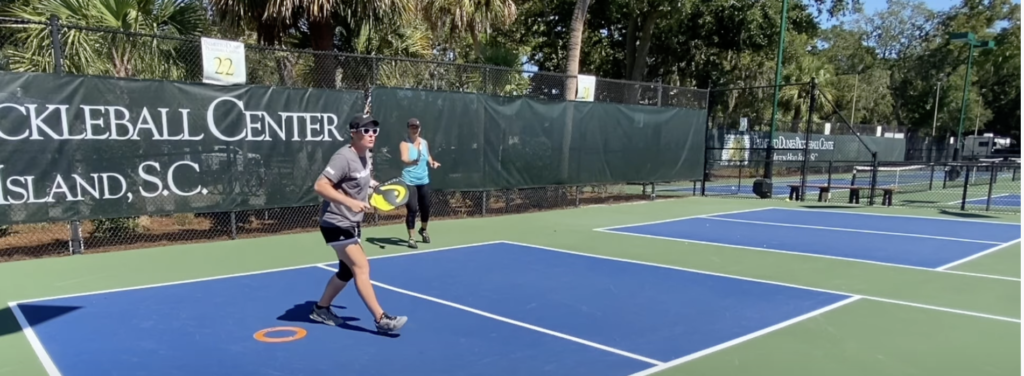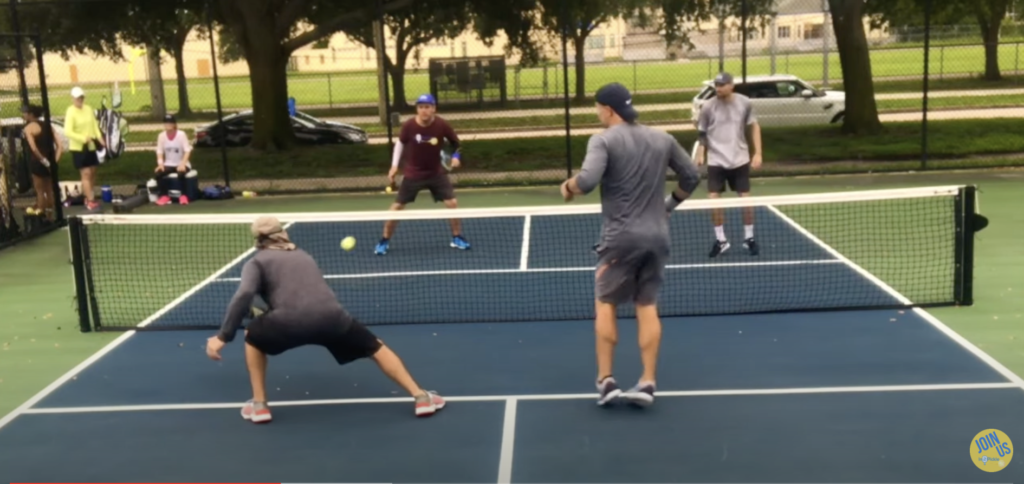One of the concepts I teach in my pickleball clinics is tethering. What do I mean by tethering? Essentially tethering means that during doubles the partners move as if connected by a rope or something in order to keep themselves parallel to each other and the same relative distance from each other during play.
We look at two YouTube videos in this post to examine whether tethering is a good or bad idea. The first video is called “Should I Tether with My Pickleball Partner,” with Sarah Ansboury from sarrahansboury.com. Sarah, as some of you might know, taught the class for PPR instructor certification that I attended, so I’m a big fan of hers and particularly interested in her understanding of tethering. The second video is called “The Tethered Move – Pickleball Movement” with Tony Roig from In2Pickle.
I’ll cut to the chase right away. Both Sarah and Tony don’t believe that tethering is a good idea.
For Sarah, tethering is a bad idea. She flat-out says “don’t bother tethering.” Moving with your partner doesn’t have anything to do with two of the most important aspects of playing the game: how and where you hit the ball. Practicing tethering, says Sarah, “gets you in trouble.” Her point is that when you are worrying about tethering with your partner you are not paying attention to the ball. It changes your ability to control the ball.
Also, according to Sarah, lateral shuffling, which is the primary movement in tethering, damages the body and “just hurts.” It’s hard on your ankles, hips, and knees, and it puts a lot of stress on your back.
Sarah demonstrates in the video how she moves up to mid-court between the baseline and the kitchen and separates from her partner, who is at the baseline. Certainly this is breaking the tether, which some might see as a bad thing, but for Sarah it’s the right move. It allows Sarah to move in either direction while her partner stays back. She is not concerned where her partner is; instead, she is more concerned about where her partner hits the ball. She wants her partner to hit to the opponent across from her so she can move to the middle if necessary to cut off the ball.
Finally, Sarah shows us what happens when she and her partner are at the kitchen line. Again she says that moving side to side hurts the knees and puts stress on the body, so you should avoid shuffling side to side. According to Sarah, the pros and higher level players don’t tether. Too many moving parts. Stabilize the body and move to the ball when necessary. In other words, you are better off moving with the the ball and the flow of the point than tethering with your partner.
In the second video with Tony Roig, the lesson is the same. Skip the tethering and “move with the ball.” Tony goes to great lengths to show how you can get into trouble tethering because it leaves part of the court open for your opponents to attack, whereas, if you move with the ball you will be in better position for the ensuing rally.


